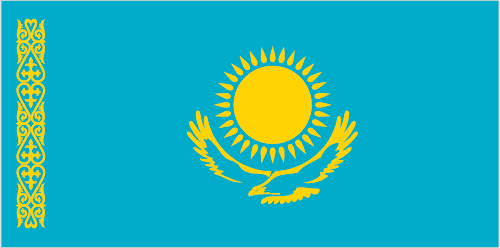Meeting and Greeting
The handshake is the common greeting. Two hands are often used.
Handshakes tend to be gentle.
Many Kazakh men will not shake hands with women. A woman should extend her hand, but if it is not accepted, she should not be insulted.
Maintain eye contact during the greeting.
Shake hands at the end of a meeting, prior to leaving.
If you meet someone several times in the same day, you should shake hands each time.
Wait to be introduced to everyone, usually in order of importance.
Academic and professional titles are used in business.
People are called by their title and surname.
Wait until invited before using someone’s first name.
Business cards are extremely important to establish one’s position, navigate bureaucracy and open doors.
Likewise, show the card of someone significant when trying to gain access or secure an appointment.
Business cards are exchanged without a great deal of ritual.
It is advisable to have your business cards printed in Russian on one side and English on the other.
Make certain that your title is included on your business card.
Communication Styles
Protecting relationships and people’s honour is important. As a result Kazakhs finesse what they say in order to deliver information in a sensitive and diplomatic manner. They tend to speak in a roundabout fashion rather than a linear fashion. They respond more favourably to gentle probing rather than direct questioning.
At the same time, many Kazakhs have a somewhat volatile demeanour and can raise their voice to get their point across. They are known for their fierce arguments. You may wish to retaliate in kind, but do so cautiously as there is a fine line between standing up for yourself and appearing overly aggressive.
Hierarchy is respected in Kazakhstan. Someone more senior is never ever contradicted or criticised, especially in public. You will be expected to treat senior Kazakhs in the same manner.
Business Meetings
Meeting styles vary by the type of business entity. Private industry is often more focused and westernized; things are a little bit more fluid. Public entities, on the other hand, follow lots of protocol and red-tape (leftovers from the Communist era). The latter may involve many more meetings and patience.
The hierarchical nature of the culture means that Kazakhs will want to meet people of similar rank. Therefore, it is important to forward the bios of all team members well in advance of any meeting.
T-shaped tables are often used for meetings so that both sides can be seated opposite each other. The top Kazakh at the meeting will sit at the head and his staff will be seated in decreasing order of rank. Your team should attempt to seat themselves in the same manner. In some companies, there is an emerging trend to seat peers next to each other to facilitate conversation.
There is generally a fair amount of small talk before business is discussed. This may take place over tea and sweets. Wait for the other party to bring the conversation to business. Spend time in relationship building; as a family orientated people they want to be sure you are trustworthy, affable and reliable.
The most senior Kazakh at the meeting opens the discussion and introduces his team in rank order. Although meetings have a start time, they seldom have an ending time. They are masters at delivering roundabout speeches. Therefore, it would be impractical to predetermine when a meeting will finish.
